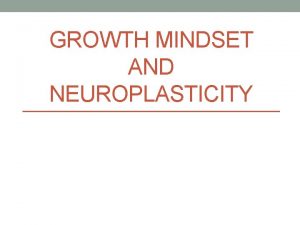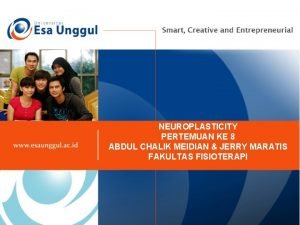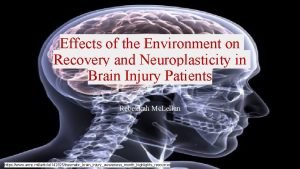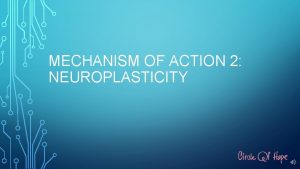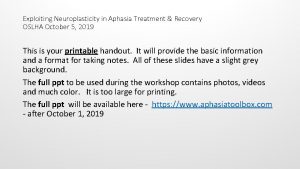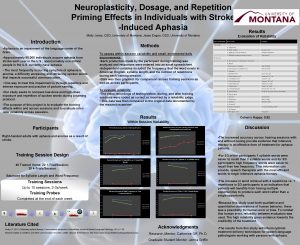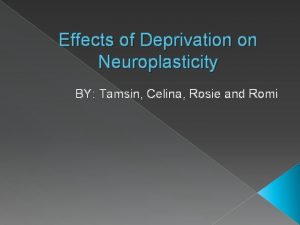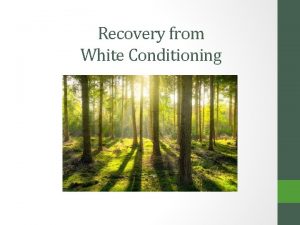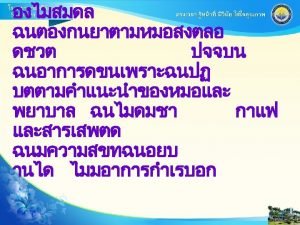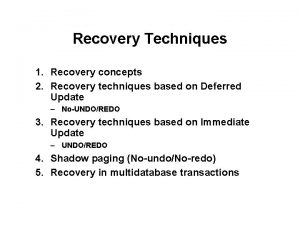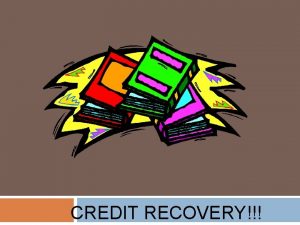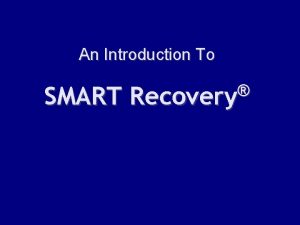Effects of the Environment on Recovery and Neuroplasticity















- Slides: 15

Effects of the Environment on Recovery and Neuroplasticity in Brain Injury Patients Rebekkah Mc. Lellan https: //www. army. mil/article/142825/traumatic_brain_injury_awareness_month_highlights_resources

Significance ● The “why”- I have a personal stake in learning about this because I have had a head injury that changed my life. ● Each year an estimated 1. 7 million people in the United States sustain a Traumatic Brain Injury (Center for Disease Control). These people can live with deficits from this invisible disability without anyone ever knowing. ● What was looked at? ○ Differences in types of environment and whether this benefitted or made no difference in a person’s self relationship, personal relationships, and recovery.

Objective ● The objective of this research was to complete a literature review in the MPH program. I wanted to gain an understanding of how the environment plays a role in the recovery from a brain injury and how the neuroplasticity is affected. ● Methods: ○ Key words used were: brain injury, traumatic brain injury, acquired brain injury, environment, recovery, rehabilitation, enriched environment, and plasticity ○ Databases used were: LC One. Search, Medline, EBSCOhost, and Google Scholar

What is Environmental Enrichment? • Environment is referred to as the biological, social, and psychological aspects affecting a brain injury or post BI patient (Richardson, Mc. Kay, and Ponsford. 2014). • Environmental Enrichment is treatment, socialization, or change in a patients environment that may have the ability to assist in the recovery process or plasticity post brain injury. Image: https: //www. frontiersin. org/articles/10. 3389/fncel. 2014. 00097/full

Post-Injury or Post Acute Decline • What is it? • A time after the initial brain injury in which the patient has deterioration in one or more aspects of their life, lifestyle, or environment • Causes a disparity in mental flexibility and cognitive processing speed (Kelly, Amerson, and Barth. 2012) • Difficulties faced: • Relationship • Poorer education outcomes • Difficulty living independently (Richardson et al. 2014)

Neurogenesis Image: http: //slideplayer. com/slide/9784949/31/images/12/Stroke+patients+rewired. jpg

Treatment Image: http: //www. biausa. org/brain-injury-treatment. htm

Community Involvement and Self Participation • Participation post injury within personal tasks and community involvement decreases (Wong et al. 2017) • Post BI patients found disparities in the Information and Technology Access, social attitudes toward them and their support systems and their physical environment (Wong et al. 2017) • This causes reduced participation and poorer affect toward the community and self

Physical Activity Environmental Enrichment enhances the level of physical activity which then in turn has beneficial brain structure effects Pairing EE with physical activity causes greater recovery and neurogenesis • Supported by AJ Hannan (2014) • Study on rodents in standard and enriched housing conditions • Showed that physical activity increased in the enriched environment and increased hippocampal neurogenesis • Supported by Frasca et al (2013) • Use it or lose it theory • Social leisure activity is associated with less cognitive decline • Physical activity proposed as a buffer against post-acute decline

Combined versus Monotherapy Combined Therapy • EE and stem cell therapy(Dunkerson et al. 2014) • Music evoked and memory training(Gurr and Foxhall. 2014) • EE with task specific training (Mala and Rasmussen. 2017) • EE with growth treatment factor (Mala and Rasmussen. 2017) • Task specific training and growth treatment factor (Mala and Rasmussen. 2017) Monotherapy • Environmental Enrichment • Neuropsychology • Rehabilitation • Physical therapy

Limitations ● ● ● Small study pools Animal models Limited research on prior conditions Only 24 sources used Minimal research breaking down age, sex, race

Recommendations and Discussion • More research dividing the kinds of EE • Discontinue repetitive studies • Transition to human subjects • More research on post-acute decline and pre- injury conditions • Information more available to patients, families, and caretakers

Conclusion • Environmental Enrichment is a successful method to promote brain repair • Neuroplasticity and positive recovery effects sustain long term • Focus should be refined to separate demographics and different areas of EE

References Frasca, D. , Tomaszczyk, J. , Mcfadyen, B. J. , & Green, R. E. (17 April 2013). Traumatic brain injury and post-acute decline: what role does environmental enrichment play? A scoping review. Frontiers in Human Neuroscience, 7(31), 1 -25. doi: 10. 3389/fnhum. 2013. 00031 Hannan, A. J. (2014). Review: Environmental enrichment and brain repair: harnessing therapeutic effects of cognitive stimulation and physical activity to enhance experience-dependent plasticity. Neuropathology and Applied Neurobiology, 40(1), 13 -25. doi: 10. 1111/nan. 12102 Kelly, J. C. , Amerson, E. H. , & Barth, J. T. (2012). Mild Traumatic Brain Injury: Lessons Learned from Clinical, Sports, and Combat Concussions. Rehabilitation Research and Practice, 2012, 1 -5. doi: 10. 1155/2012/371970 Richardson, C. , Mc. Kay, J. , & Ponsford, J. L. (2014) The trajectory of awareness across the first year after traumatic brain injury: The role of biopsychosocial factors, Brain Injury, 28: 13 -14, 1711 -1720, DOI: 10. 3109/02699052. 2014. 954270 Traumatic Brain Injury & Concussion. (2017, July 06). Retrieved September 20, 2017, from https: //www. cdc. gov/traumaticbraininjury/index. html

References Traumatic Brain Injury Information Page. (n. d. ). Retrieved November 21, 2017, from https: //www. ninds. nih. gov/Disorders/All-Disorders/Traumatic-Brain-Injury. Information-Page Treatment. (n. d. ). Retrieved October 18, 2017, from http: //www. biausa. org/brain-injury-treatment. htm Wong, A. W. , Ng, S. , Dashner, J. , Baum, M. C. , Hammel, J. , Magasi, S. , . . . Heinemann, A. W. (2017). Relationships between environmental factors and participation in adults with traumatic brain injury, stroke, and spinal cord injury: a cross-sectional multi-center study. Quality of Life Research, 26(10), 2633 -2645. doi: 10. 1007/s 11136 -017 -1586 -5
 Whats neuroplasticity
Whats neuroplasticity Neuroplasticity ib psychology
Neuroplasticity ib psychology Habituation neuroplasticity
Habituation neuroplasticity Negative effects of technology on environment
Negative effects of technology on environment Financial environment of business
Financial environment of business Hình ảnh bộ gõ cơ thể búng tay
Hình ảnh bộ gõ cơ thể búng tay Ng-html
Ng-html Bổ thể
Bổ thể Tỉ lệ cơ thể trẻ em
Tỉ lệ cơ thể trẻ em Voi kéo gỗ như thế nào
Voi kéo gỗ như thế nào Glasgow thang điểm
Glasgow thang điểm Chúa yêu trần thế alleluia
Chúa yêu trần thế alleluia Các môn thể thao bắt đầu bằng tiếng nhảy
Các môn thể thao bắt đầu bằng tiếng nhảy Thế nào là hệ số cao nhất
Thế nào là hệ số cao nhất Các châu lục và đại dương trên thế giới
Các châu lục và đại dương trên thế giới Công thức tính độ biến thiên đông lượng
Công thức tính độ biến thiên đông lượng
